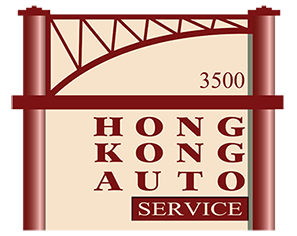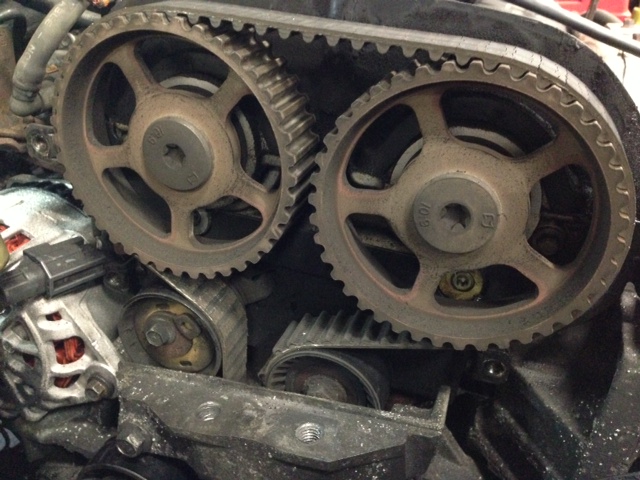Why do I need a timing belt replacement?
Timing belts are one of those maintenance items that car owners don’t often think about but should. The timing belt is a critical part of your engine. If it fails, your car will stop running and, in some cases, incur major engine damage.
To help you head off any unexpected or costly surprises, let’s cover some of the most frequently asked questions about timing belts.
 What does a timing belt do?
What does a timing belt do?
The timing belt is a strong rubber belt that connects to the camshaft and crankshaft to make sure that the valves and pistons in your engine open and close at the correct times. The belt synchronizes the timing of these moving parts for the efficient running of the engine.
How often should a timing belt be replaced?
Most automobile manufacturers recommend a timing belt replacement between 60,000 – 105,000 miles. You can find more specific information on the suggested replacement of your vehicle’s timing belt in your owner’s manual. We are also glad to help you assess the situation, so don’t hesitate to contact us.
Can the timing belt be inspected to see if it needs replacing?
This depends on the vehicle. Most are hidden under dust covers and other engine components that make it hard to do a simple inspection. Even if the mechanic removes these, it is extremely difficult to accurately assess the condition of the belt by looking at it. A timing belt does not visibly deteriorate the way that a drivebelt or serpentine belt does. That’s why we (and the carmakers) recommend replacing the belt at a specific mileage interval.
What is the average cost of a timing belt replacement?
If you replace the belt before it breaks, it typically costs between $500 and $1000. But, replacing the belt after it breaks may cost up to $2000 or more because the break may cause severe damage to your engine’s valves, pistons and cylinder head.
Most auto shops, including ours, recommend that you also replace the water pump when you replace the timing belt. The reason for this is simple: Because the pump is deep within the engine and is usually the same age as the belt, it can save you a lot on labor costs later to replace it at the same time. (You typically have 3 to 4 hours of labor just to access the timing belt and another hour to access the water pump. If you don’t replace the water pump at the same time and it fails in 6 to 12 months, you’ll have to incur those labor charges all over again.)
Do all cars have a timing belt?
No they don’t. While many cars have a rubber timing belt as described above, many also have timing chains, which rarely need to be replaced. Again, your owner’s manual will give guidance on your particular vehicle’s timing component and maintenance schedule. But if you ever have any questions, don’t hesitate to contact the team at Hong Kong Auto Service.
As you can see, proactively replacing your car’s timing belt can save you a lot of money, headaches and hassles. If you have questions about your timing belt or other preventive maintenance, we’re here to help you keep your car running reliably and safely.

